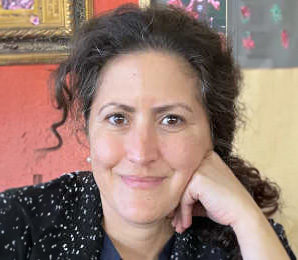It started with a story about changes to an algorithm used to prioritize who should receive a liver transplant. Soon Annie Gilbertson and Ben Tanen were pulling data threads and getting a crash course on the history of organ transplant policy, the criteria hospitals use to choose who gets a new liver, and the history of the Indian Health Service.
Their reporting uncovered that Native American people are much less likely than people from other racial groups to be placed on the national liver transplant list, even though they have the highest mortality rate from liver disease. A joint investigation of The Markup and The Washington Post, their story delves into what’s driving inequities in that process. It also hints at shortcomings in education efforts to reach transplant candidates, as well as access to drug addiction treatment in the U.S.
Gilbertson and Tanen recently talked to the Association of Health Care Journalists about their reporting strategy.
(This interview has been edited for brevity and clarity.)
How did you decide to use the liver disease death rate in your analysis over other liver health measures?
Gilbertson: The thing is with livers, there’s not really a good denominator. With kidneys, there’s more data, because you have dialysis centers, and so you know sort of like where people are at in their kidney disease and who could benefit from a new kidney and you have a denominator.
There’s a huge spectrum of liver disease. Not everybody needs a transplant by any means. But if you’re dying from liver disease, chances are you could’ve benefitted from a transplant had you been a good candidate.
What did you learn about the availability of data? And in particular, racial disparities data?
Tanen: First and foremost, about just the transplant system, and the data that’s available, there’s one primary network that has been responsible for transplants throughout the United States. They have a variety of groups that work with them and do oversight on them to make sure that the system is fair. And that data is generally available to folks. But even still, there’s a lot of gaps.
I think when it comes to the racial gap, that was the primary focus of the story. It really wasn’t primarily covered in these datasets at all, they have the standard race fields and ethnicity fields. But there’s not too much breakdown by those demographics other than the simple counts and aggregations there.
In this case, the face of the numbers is a family member of people who have died. Could you speak about the process of finding (a central character) Mr. (Lee) Yaiva?
Gilbertson: Yeah, we started looking for people right away. We were interested in disparities in Black America, too. So I did a lot of looking there as well as within the Native American community. I probably put out dozens and dozens of calls.
I’m looking at GoFundMe. I’m looking for people who are in need of a transplant or have mentions of liver disease. I was looking through obituaries, published in newspapers and in funeral homes. Just from having lived in the South, I know that there’s Black funeral homes and white funeral homes.
I ended up finding Lee, just by happenstance, because I was also interested in speaking to community leaders and experts in various Native American communities.
You hinted [before we started the interview] that there are a lot of ugly comments in the comment section of your story. I haven’t read them, but I’m assuming that they have to do with stereotypes that a lot of people have about Native American people and alcoholism.
Gilbertson: Yeah, I was very aware of this stereotype and really worked to report sort of against it. I had skepticism about that stereotype going in, and just knowing that data often is indicative of something else going on.
Native American mortality from liver disease is off the charts, higher than other groups of people. And it’s especially high amongst young people like people in their 30s and 40s, which is very alarming. And that doesn’t mean that they’re the only people drinking.
Certainly a lot of people are drinking and liver disease is caused by many things. But one of the primary drivers of the rise of liver disease is alcoholism. But what it does indicate is that there’s not been an intervention or that the health system has failed to intervene to stop these deaths, right?
Could you talk about how you collaborated with your sensitivity reader?
Gilbertson: She was our photojournalist, and we want to be collaborative with our photojournalists. So I said, like, you know, please take a read, we are looking for sensitivity notes. The other thing I did was like, make sure to go back to Lee and some of the other more sensitive sources and I tell them what’s coming out in the story and what the version of the story is.
How much were you able to report on policy?
Gilbertson: I was very interested in looking at the government’s promises for transplant equity, because in the 1980s, when transplants were becoming more common, the surgery was getting safer.
We ended up focusing a lot on HRSA and its mandates and UNOS, which is the United Network for Organ Sharing, that’s the contractor, and their their shared mandates to collect data around who’s being turned away from the transplant list, and to look at issues of access and try to develop policy around issues of access. We came away with the idea that you know that the federal government needed to be doing a lot more to meet their requirements for equity.










